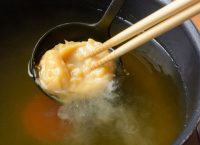Learn, Interact and Experience Udon! Explore the world of Udon at “UDON HOUSE”, the extended hands-on accommodation
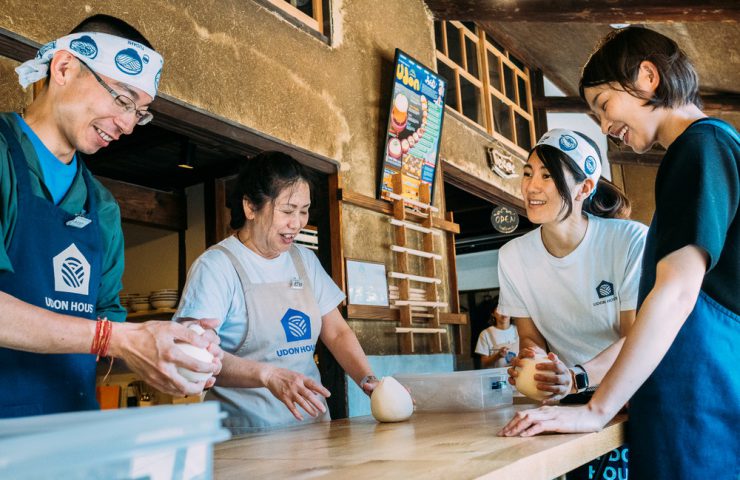
Miyoto-shi, Kagawa POSTED on 2019.08.01
- from:
- Miyoto-shi, Kagawa
- genre:
- Experience / Learn
Miyoto-shi, Kagawa POSTED on 2019.08.01
A dictionary defines “travelling” for pleasure is to “go from one place to another”
We take pictures, buy souvenirs and that is what we take away from travelling.
Perhaps, “Travelling” until recently has been tangible goods consumption.
But time changes and so as the travelling definition.
From the era of tangible goods consumption to the era of intangible goods consumption where we focus on experience and memory making more than consumption.
“UDON HOUSE” in Mitoyo-city, Kagawa, offers accommodation with the experience of Sanuki Udon, their local food and culture. Sanuki Udon is one of the most famous and eaten type of noodles in Japan. The word Sanuki comes from an old name of an area in Japan which is known to be Kagawa prefecture now.
Kanako Harada (Kanako), the representative of “UDON HOUSE” made her move from Tokyo to Kagawa with fascination to its culture. “UDON HOUSE” attracts people from all over the world for what she offers to the people who stay.

The experience offered here comes with UDON making and costs 29,800 JPY per night (not including tax).
Farm visiting on day one, and UDON hopping in the morning of day 2. People who visits this place are able to learn the local culture through Sanuki Udon.
There is also a one-day trip called “ONE DAY Udon making class and farm trip” for 15,000 JPY (not including tax) is offered. We had a chance to experience this one day trip here in Kagawa.
Udon making and Udon culture class by local people
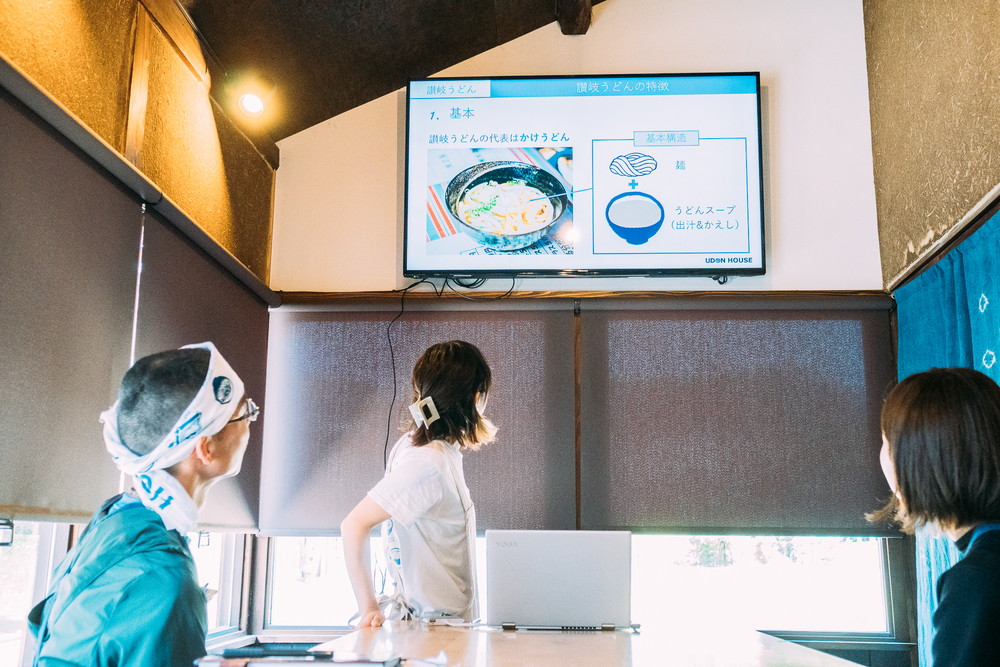
After we introduced ourselves and decided our nicknames, our first curriculum is Udon basics. Here we learn about the basic information of Sanuki Udon, its history and how they are made.
A little trivia we learned here is people in Kagawa prefecture eat 188 bowls of Udon (three to four bowls a week) on average, annually. There is 7 times more than the national average of 26 bowls annually which calculates to about two bowls a month.
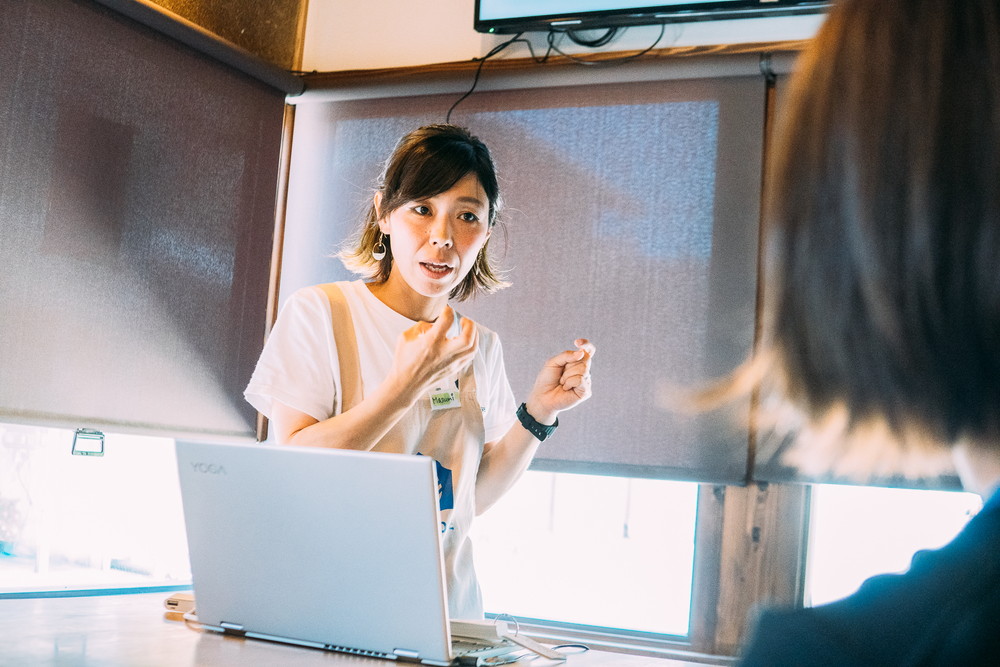
One fascinating thing for “UDON HOUSE” is that most of the staffs are local people.
The navigator for today, Masumi, is also born and raised in Kagawa with UDON her whole life. When Kanako first started the “UDON HOUSE”, Masumi helped her a lot teaching her about UDON experience.
After we learned about the UDON basics, we move on to mixing with hands and stepping by foot.
These steps were taught by Eiko, also from the local area.

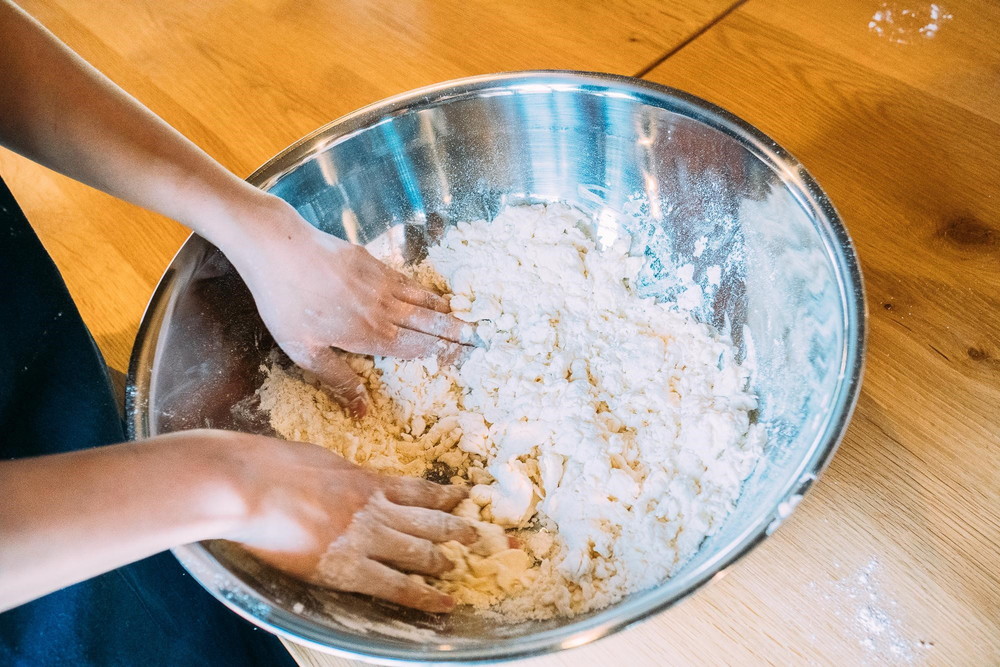
“Mixing with hands used to be men’s work and kneading with feet was for children and women’s work” said Eiko.
Meeting someone who is friendly and willing to spread the word about their local culture, is the real charm of travel experience.
The texture of Udon noodles are said to be the activation of gluten, produced when the flour protein and water are combined. It is called “hydration” that water spreads and penetrates into the particles of flour. In order to speed up the gluten activation and the hydration, stepping on the dough is a very important process.
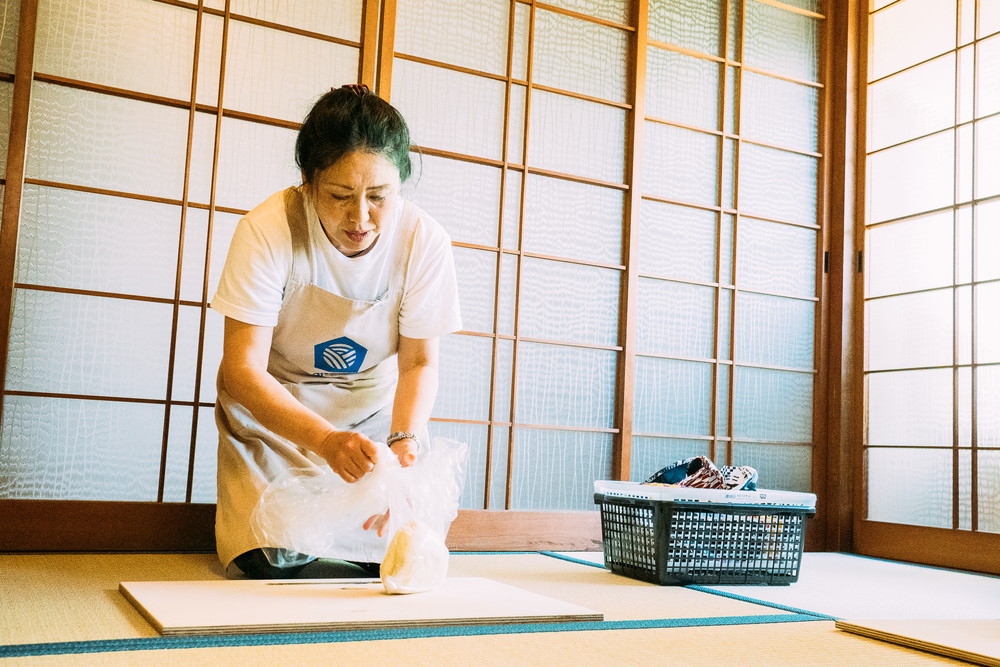
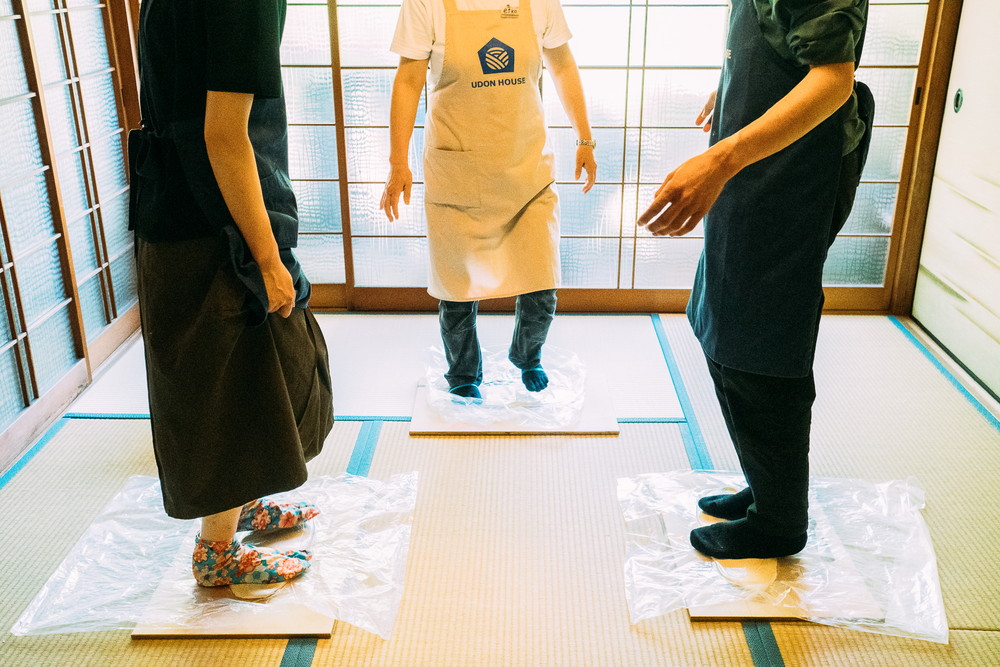
Deeper you understanding through Sanuki Udon
While we let the dough sleep, we had a class focused on Sanuki Udon.
Kanako gave us the lecture.
The udon became a trend during Osaka World Expo as the first stage of the Udon era and carries onto the 4th where famous chain started. And Kanako decided to create a fifth era from UDON HOUSE. Udon is not just food, I would like to provide people in the world to experience Sanuki Udon and feel it.
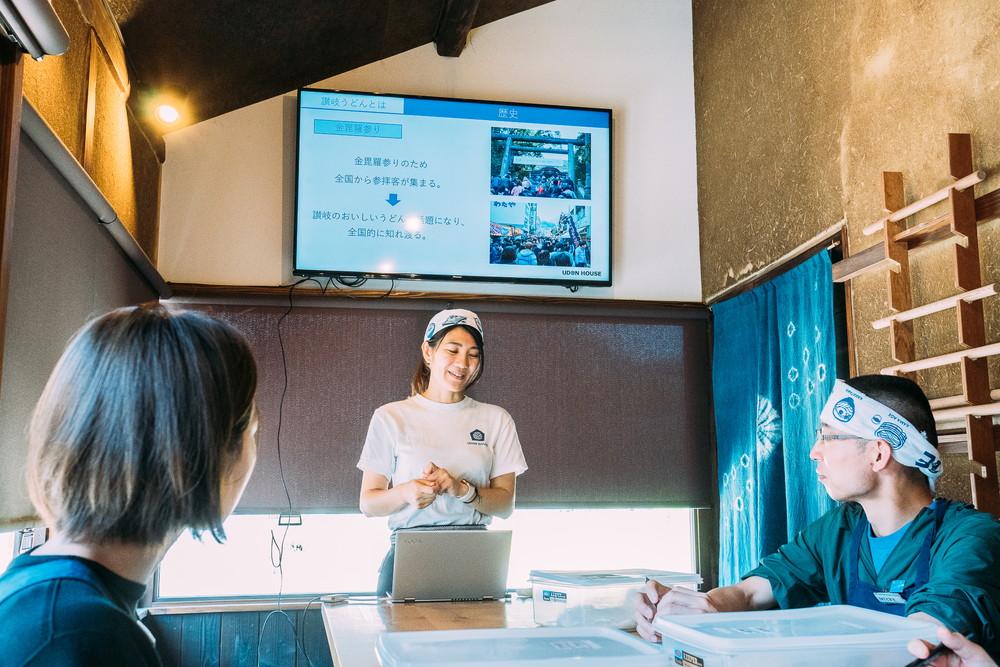
Sanuki udon can be described as chewy noodle but also famous for its soup.
“Iriko”, the dried sardine is often used for the soup. Ibukijima, an island located in the west of Kagawa has thriving fishery for “Iriko” and known to have one of the best “Iriko” in Japan. Famous “Shoyu” from Shodoshima also adds a flavor to the soup.
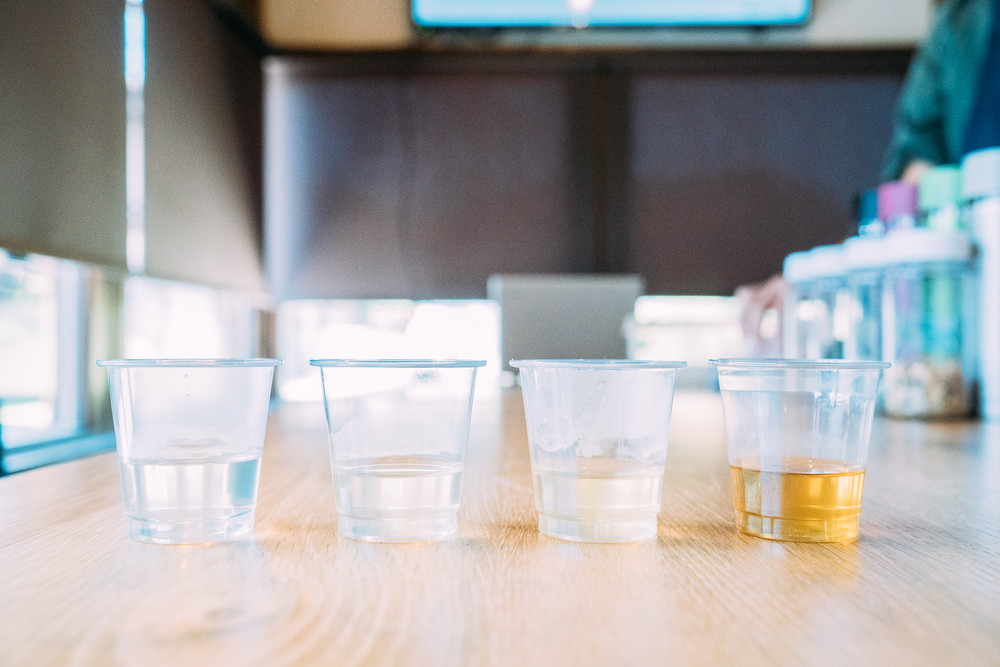
It is about the time when we get hungry, so we had a bowl of Udon for break.
The Udon we eat for the break was produced by noodle machine on the day before. We eat this to learn the difference between hand-made and the machine-made.
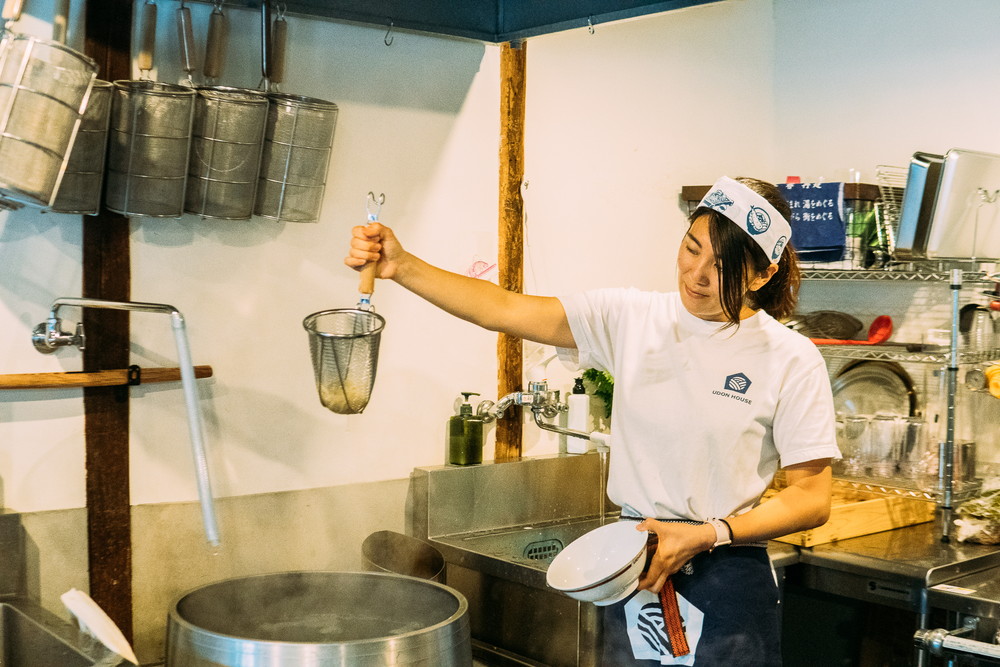
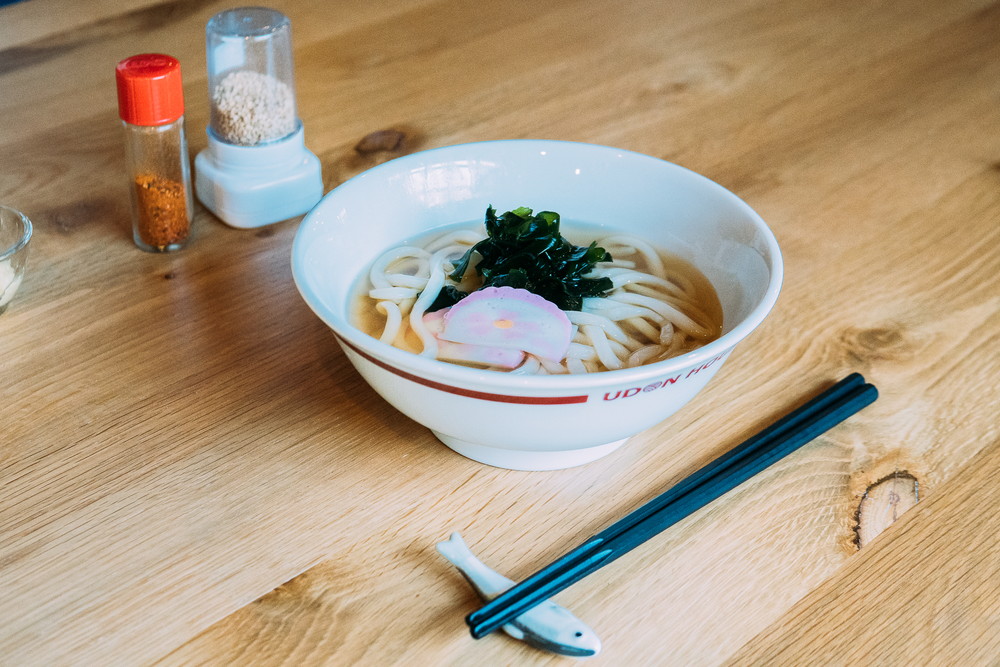
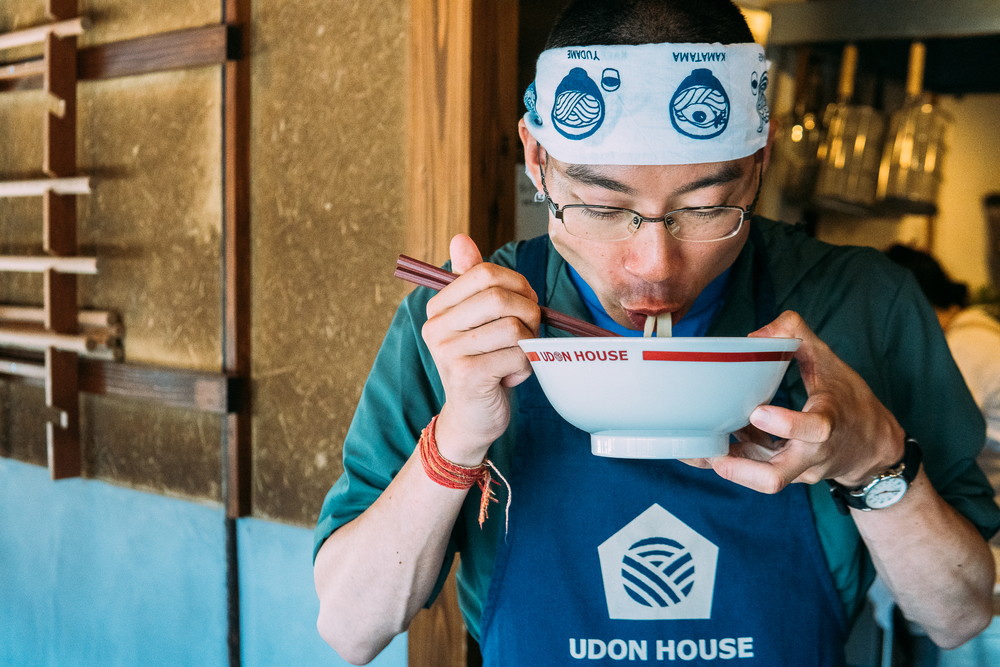
After eating the Udon, we arrange the shape of the dough using the method called “KIKUMOMI”, the traditional way of kneading the Udon dough.
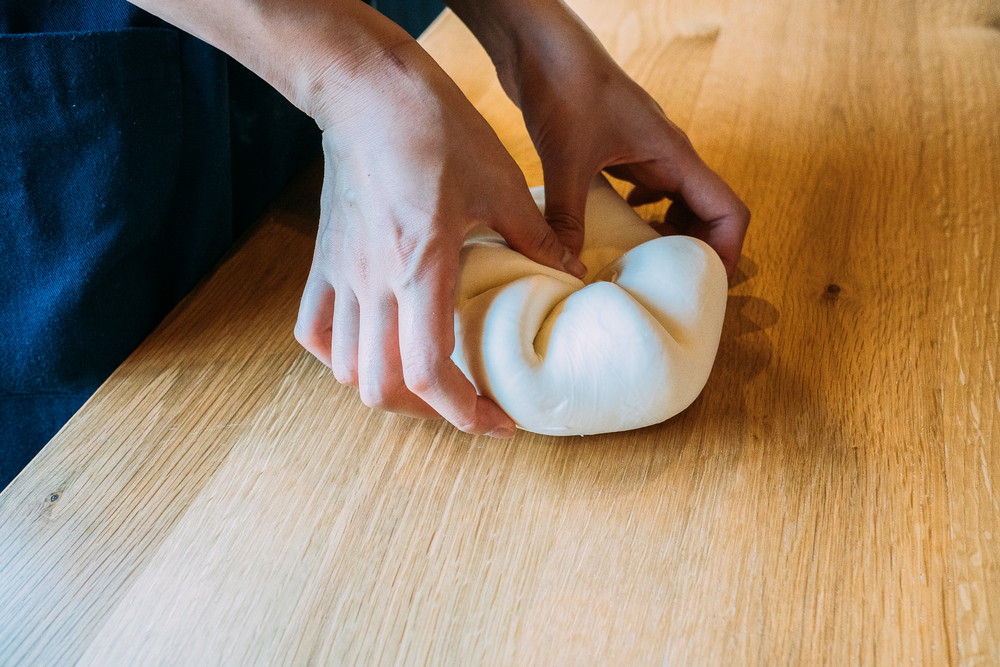
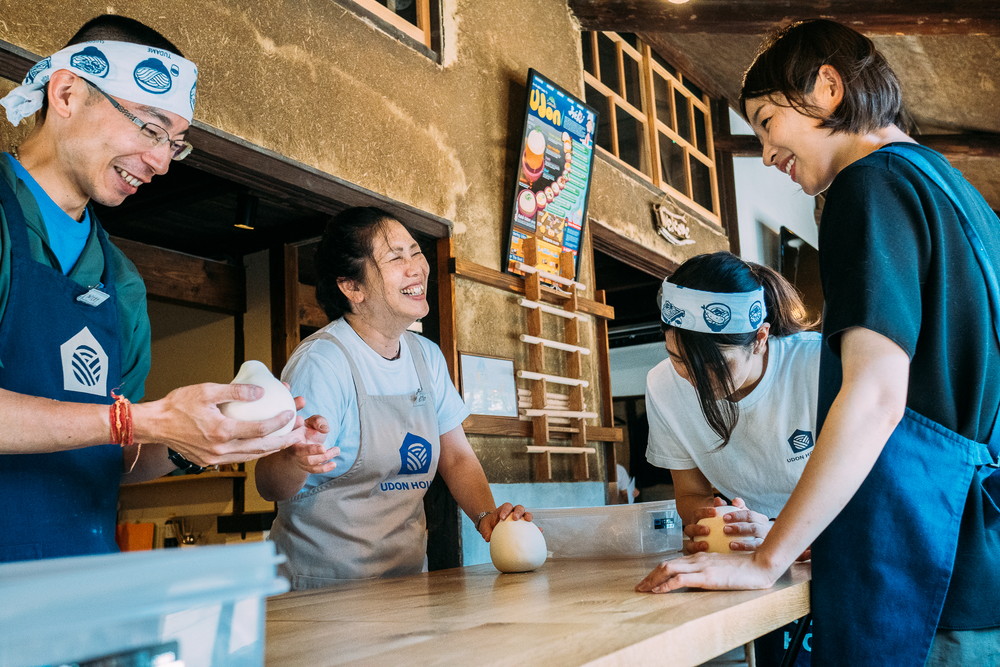
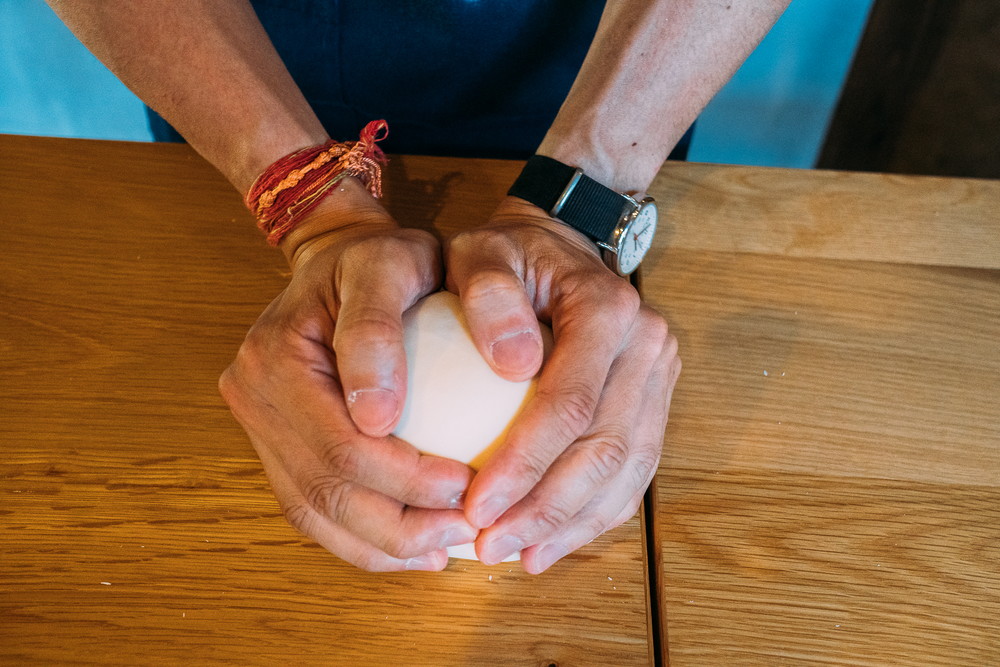
Harvesting experience at a farm with Japanese nostalgic scenery
After arranging the shape of the dough, we had let it rest for a while so we went to a farm tour during this hour.
There are number of farms that they work with, but this time we went to a farm that grows asparagus and corns. Vegetables we harvest here will be deep-fried to be a tempura to put on the Udon for later.
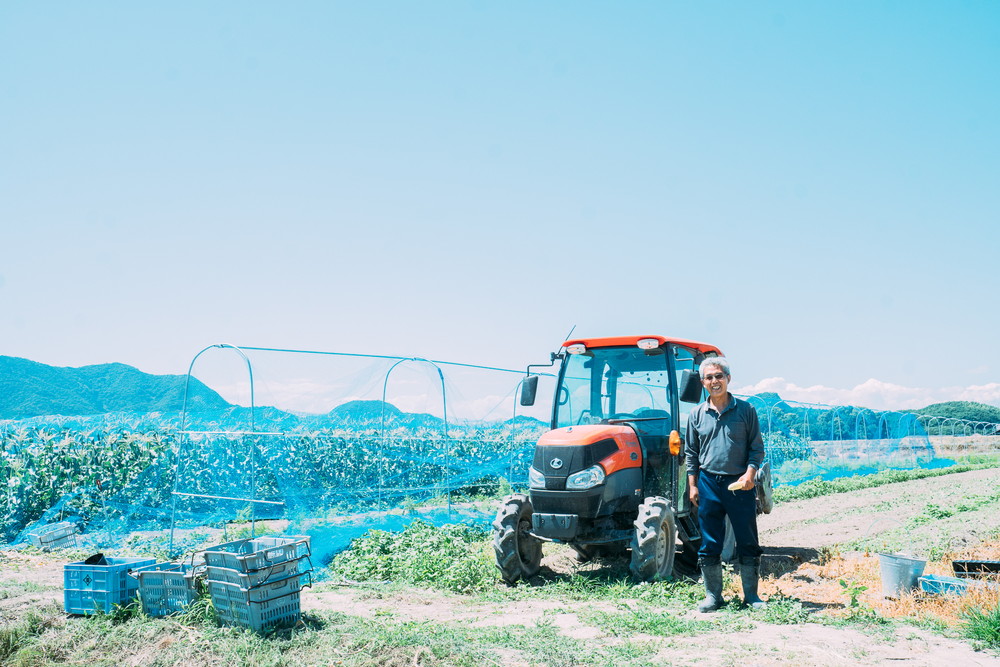
Do you know how the asparagus are harvested? The farmer who taught us how to harvest, also taught us about the ecology of asparagus. I can usually imagine how vegetables are harvested but asparagus was definitely in my blind spot.
I was surprised how asparagus grows directly from the soil like bamboo shoots.
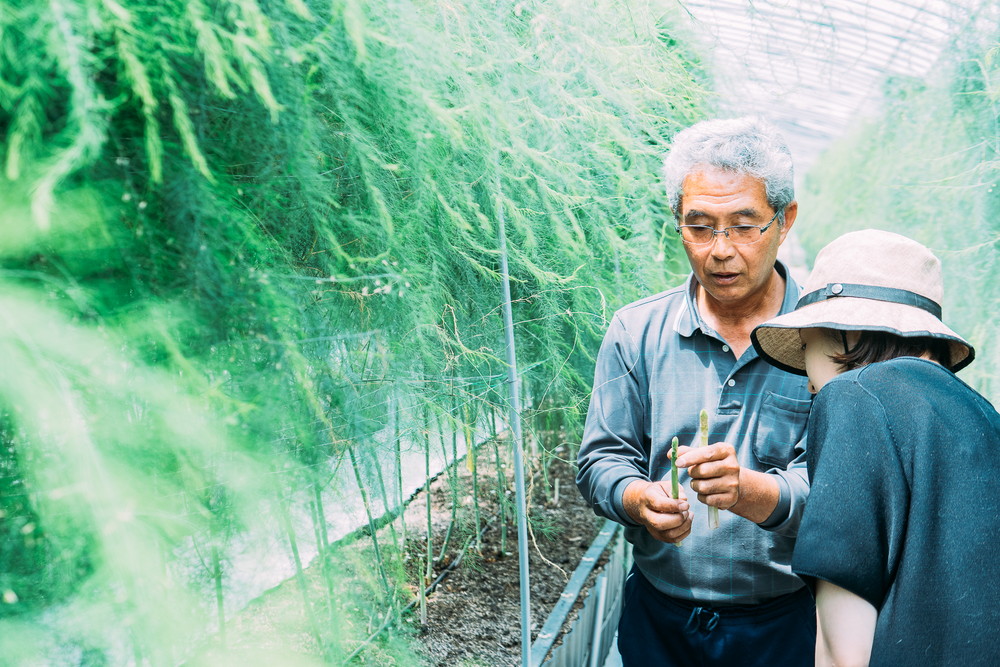
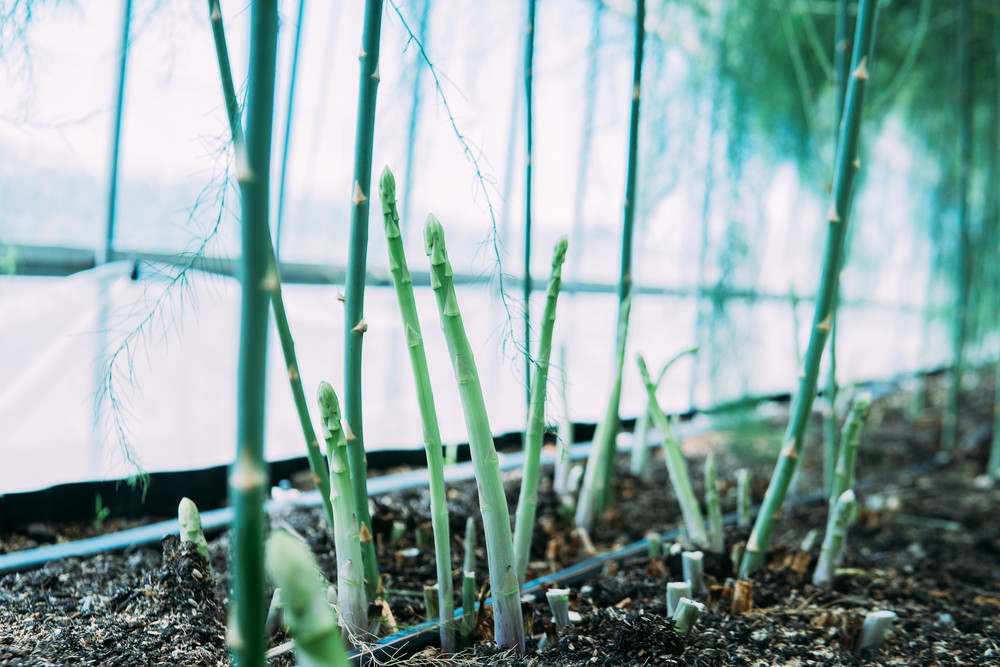
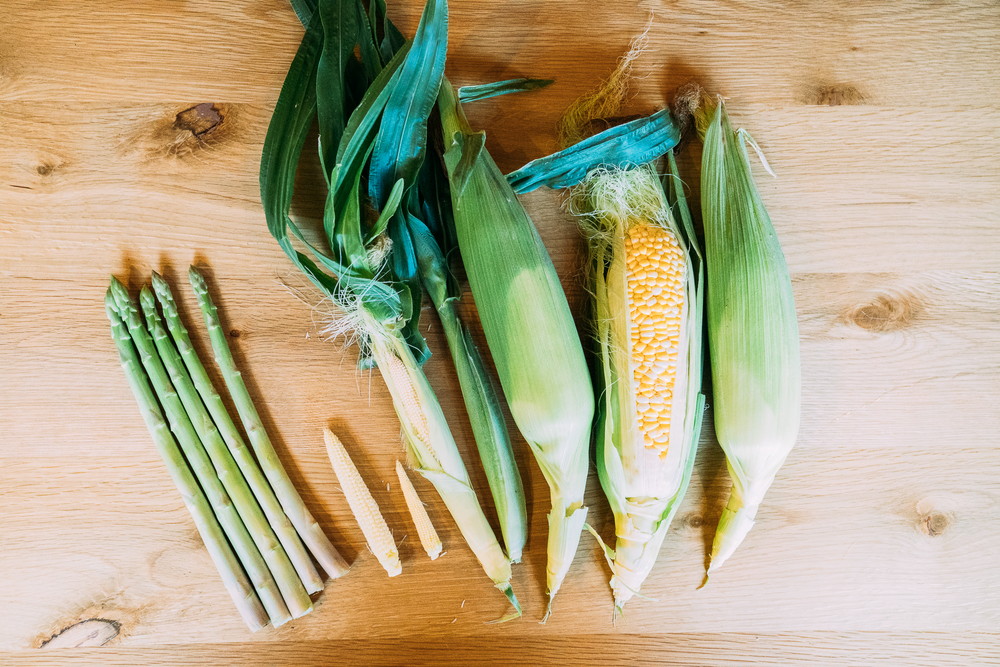
Final stages of Udon making, stretch and cut!
At a time we came back from an hour farm tour, the Udon dough we let it rest became nice and plumppy.
The next step is to cut the dough thinly to make the noodle strings.
This is a tricky for the beginners since we have to stretch a spherical shape into a thin square shaped sheet in order to make the noodle shape.
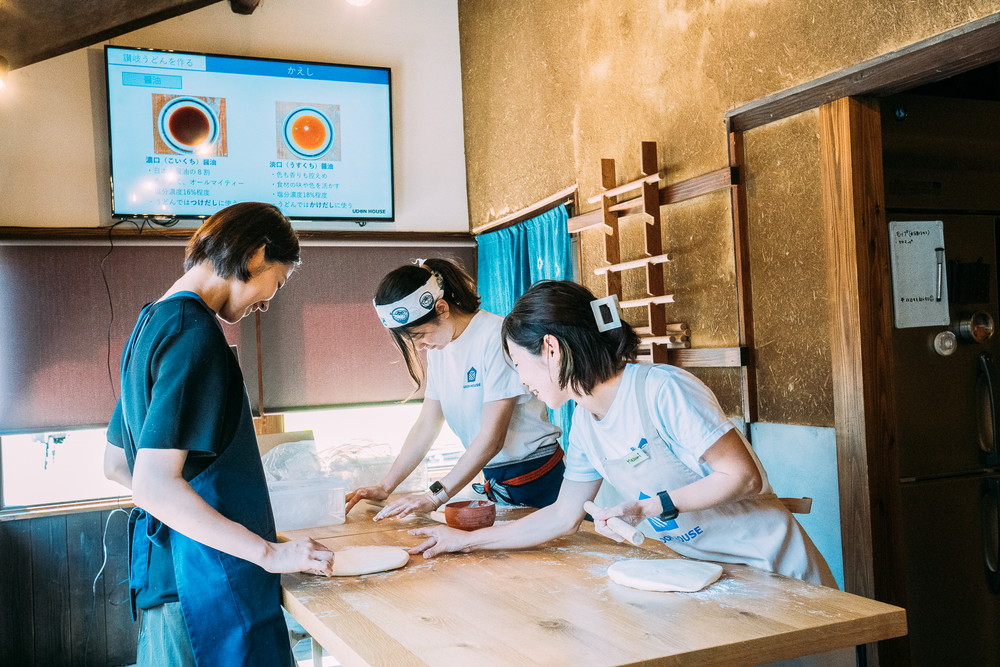
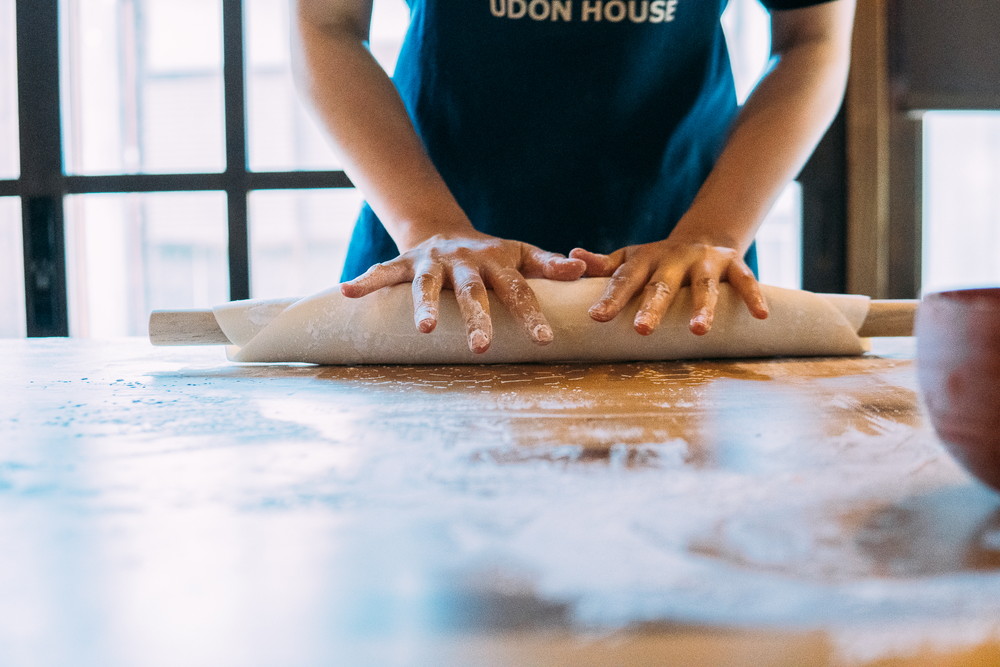
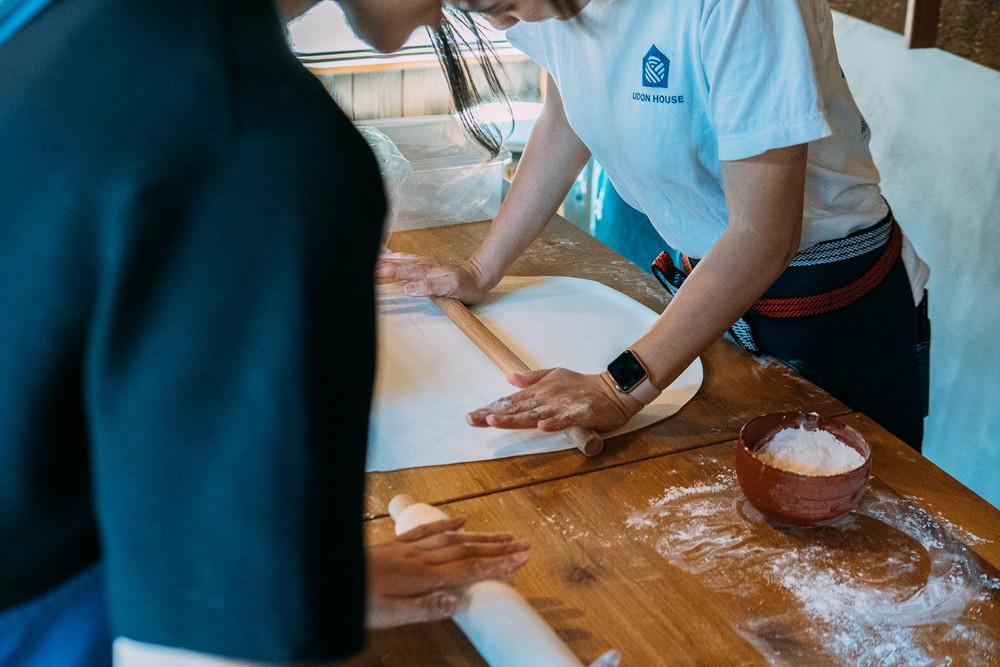
After you flattened the dough, it is finally the final stage, the cutting part.
The thickness of the noodle depends on how high you lift the knife on the noodle cutting board. So you have to cut them rhythmically in order to cut them evenly.
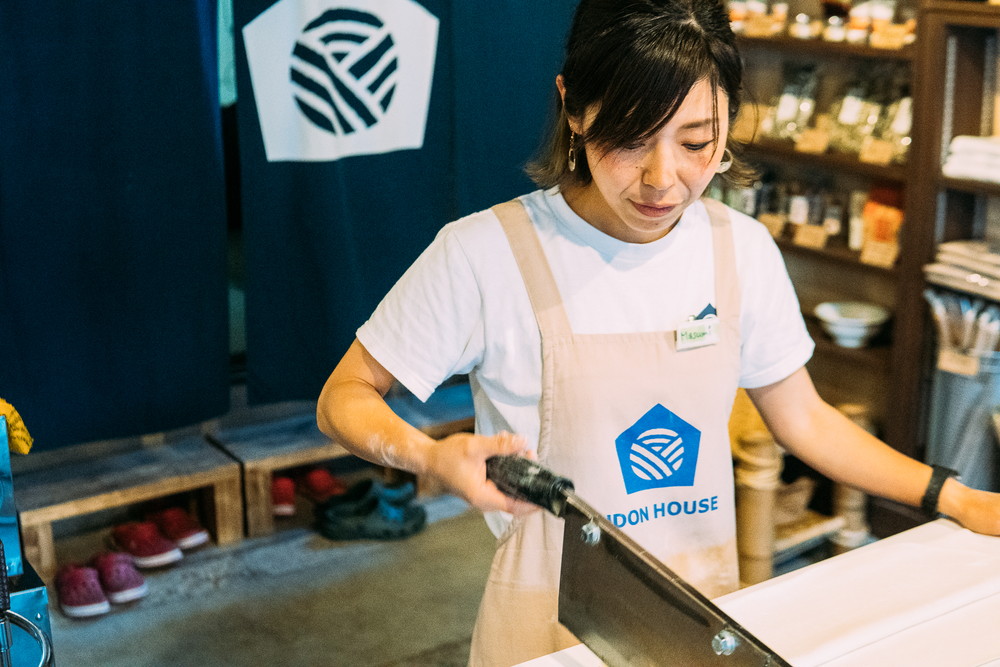
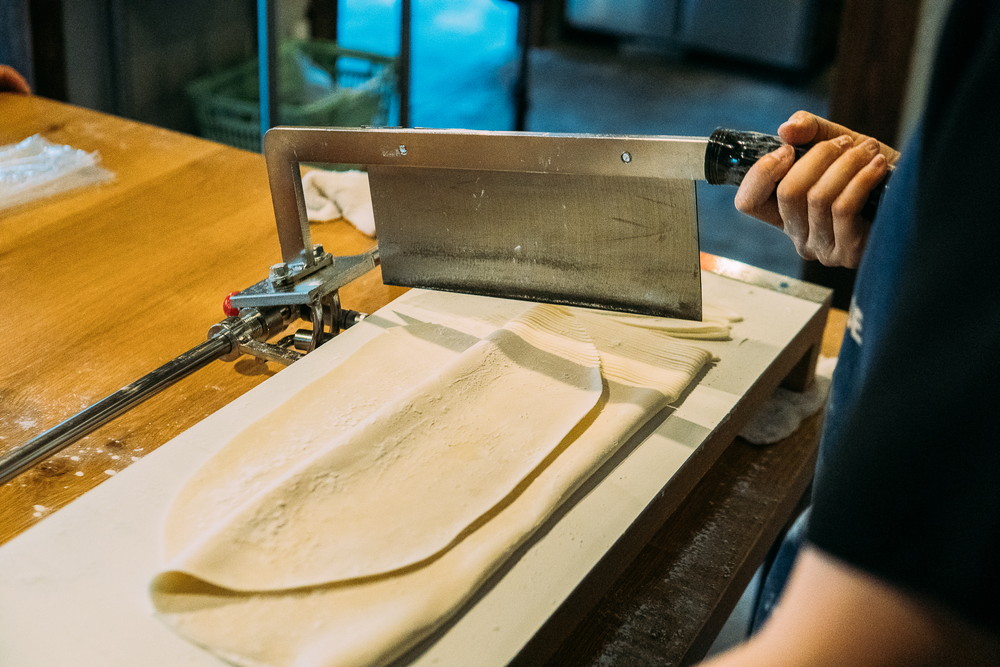
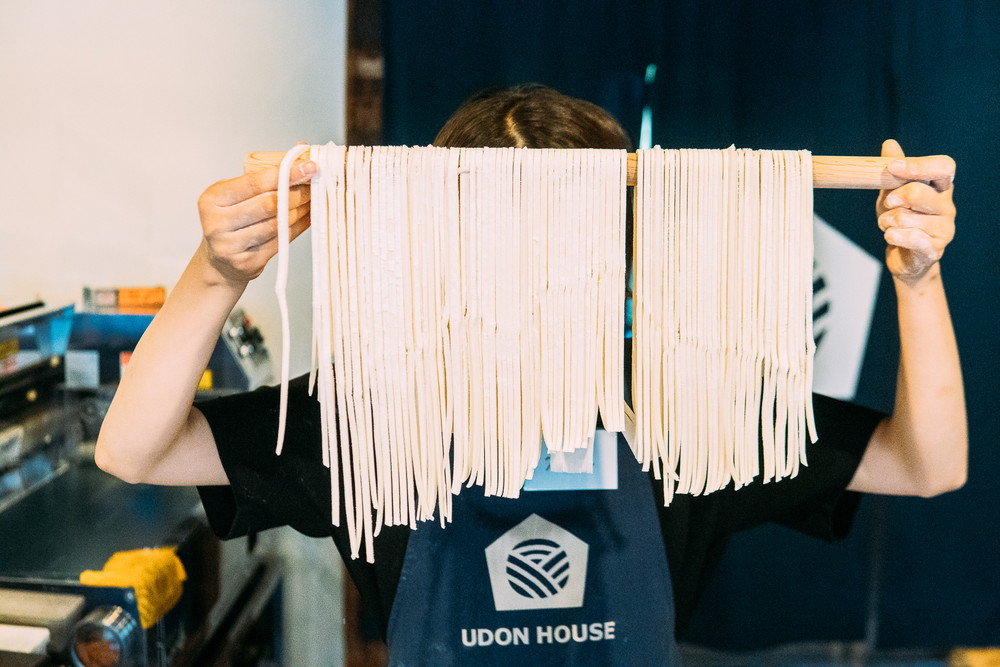
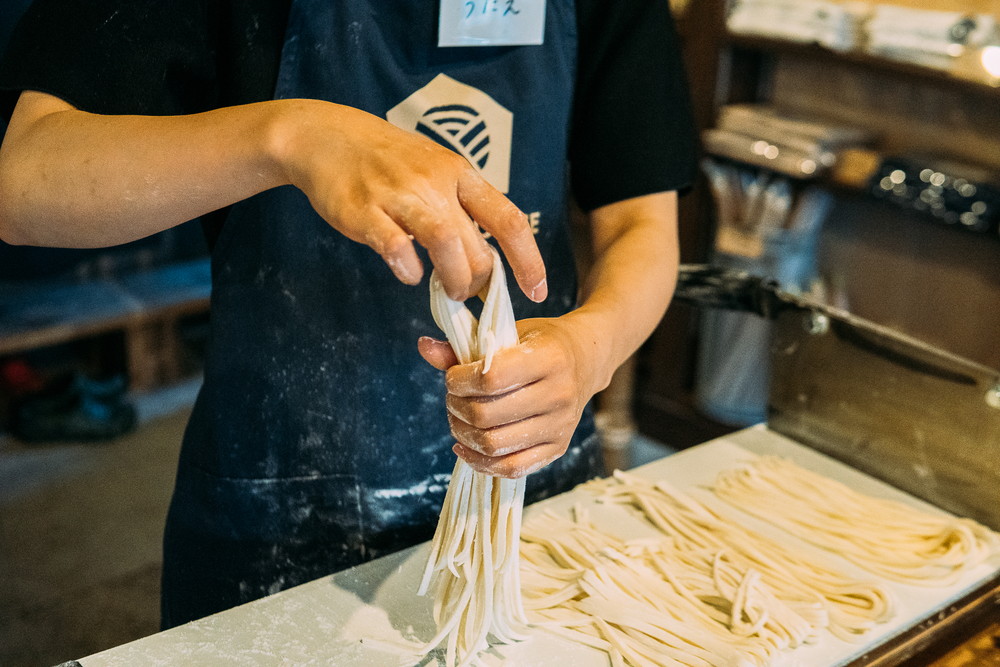
Finally time to eat! Freshly made and freshly harvested vegetable Udon
While boiling the noodles and frying the tempura, lecture on local ways to eat Sanuki Udon was given.
When you visit a restaurant and order udon, sometimes you don’t know the meaning of what is written on the menu but this lecture taught me what to order in the future.
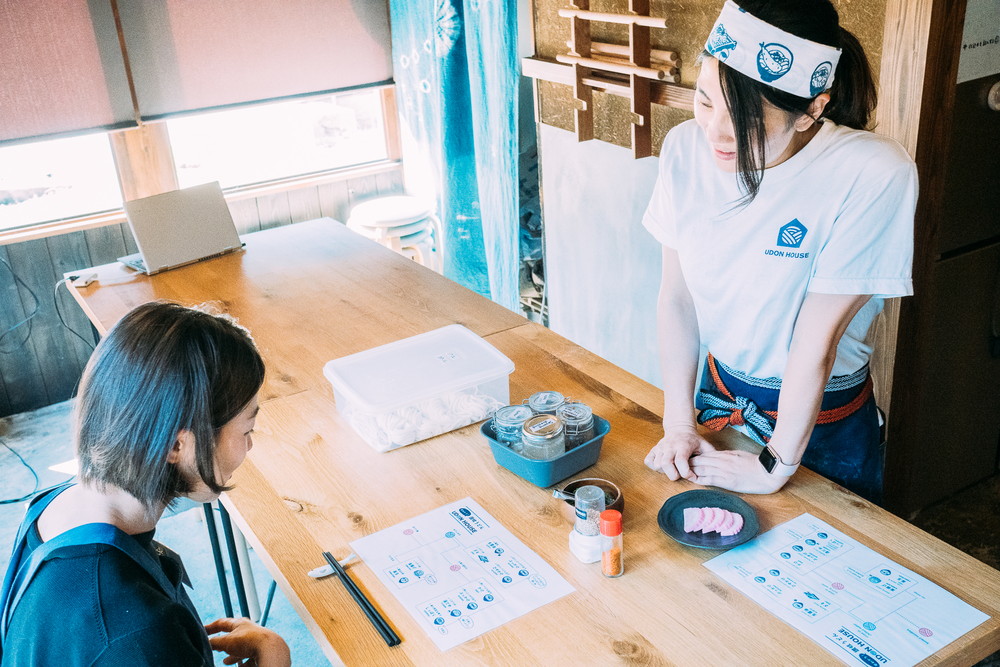
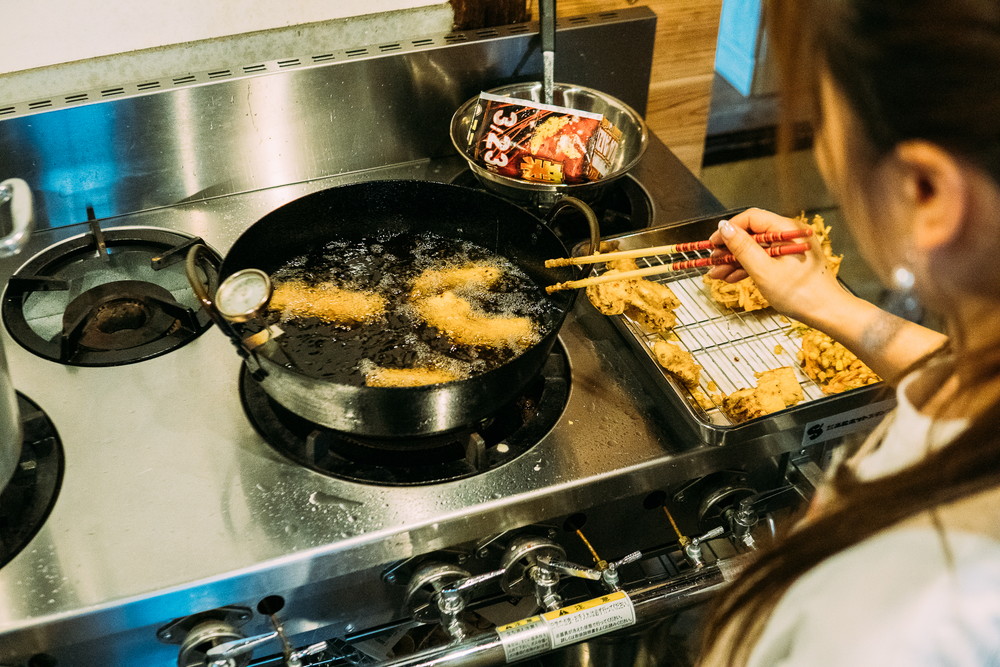
After the lecture, the Udon and Vegetable tempura are finally ready to eat.
First, I had it as “Tempura Bukkake”. Bukkake is one of the way of eating udon where you chill the boiled noodles with cold water to tighten the texture and throw (Bukkake) the hot broth onto the Udon.
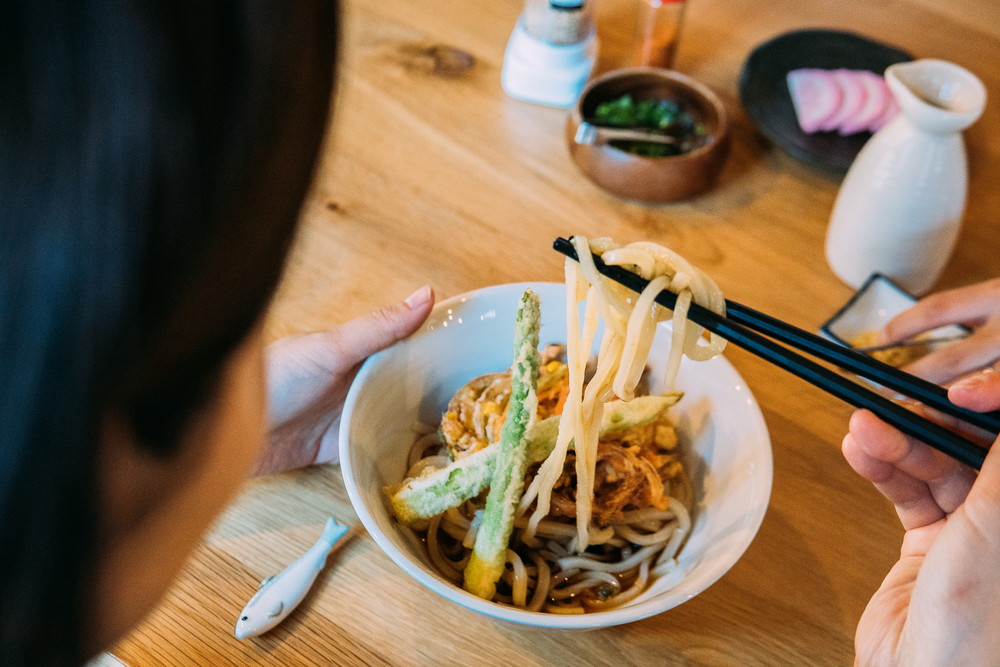
Uneven hand kneaded noodles were chewy and delicious which really made me proud of myself. Though this experience I was able to learn not only how to make udon but also the commitment and the love that local people have towards their local food, Sanuki Udon.
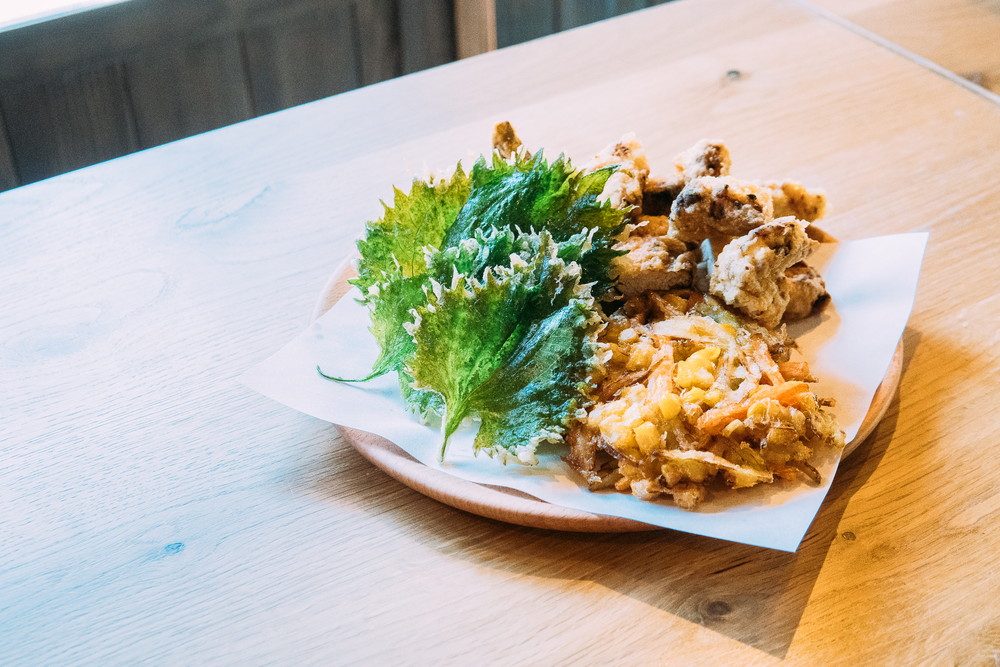
Next we had “Kamatama in four stages” as recommended by UDON HOUSE.
“Four stages” mean to add four seasonings while eating a bowl of udon. First is the original Kamatama, then add butter, black pepper and finally truffle oil.
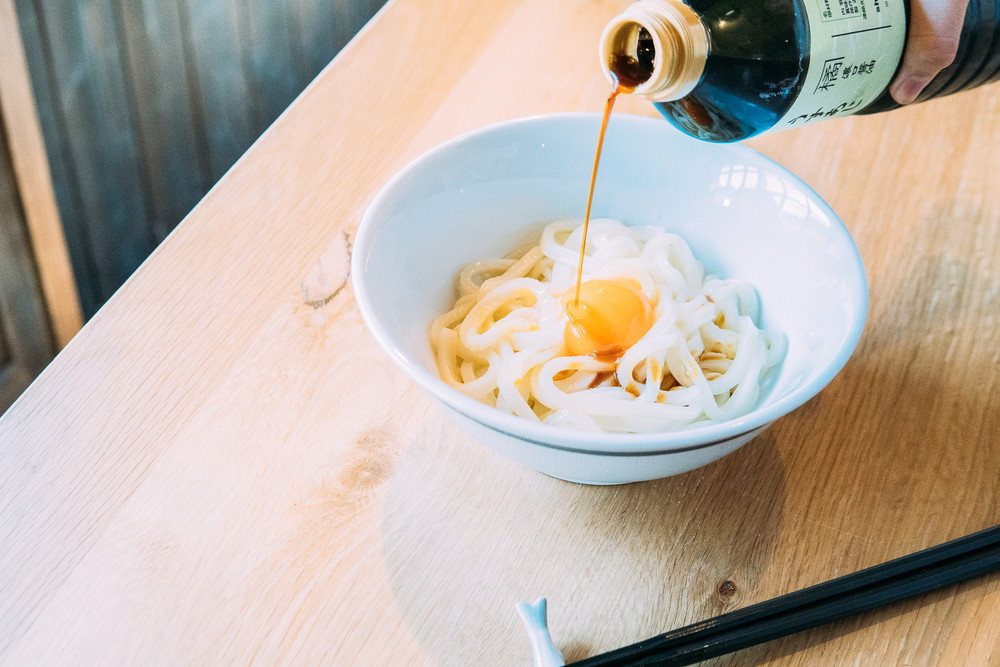
When you add butter, the flavor richens then it transformed into western flavor like carbonara when you add black pepper. Truffle oil added in the end give an elegant touch. To be able to enjoy almost four different was very satisfying.
Through this experience, we made five to six bowls of udon, so I decide to take the rest of it home.
UDON HOUSE, Born in Kagawa and raised by the commitment of Kanako and local people
UDON HOUSE is a whole new experience to the usual travelling. It offers not only an accommodation but also local culture and cultural exchange opportunity through local soul food, Sanuki Udon.
After this experience it made me think what is the intrinsic richness and luxury. Japan has many fascinating culture within the country and it is hard to know all of them even if you are from Japan. If you can experience this kind of experience by traveling, people will be able to have more intimate exchange and deeper understanding of the place and have higher chance of calling it their second hometown and there will be a place to go back anytime.
So as a writer, we had a chance to ask Kanako, why she made UDON HOUSE in the first place.
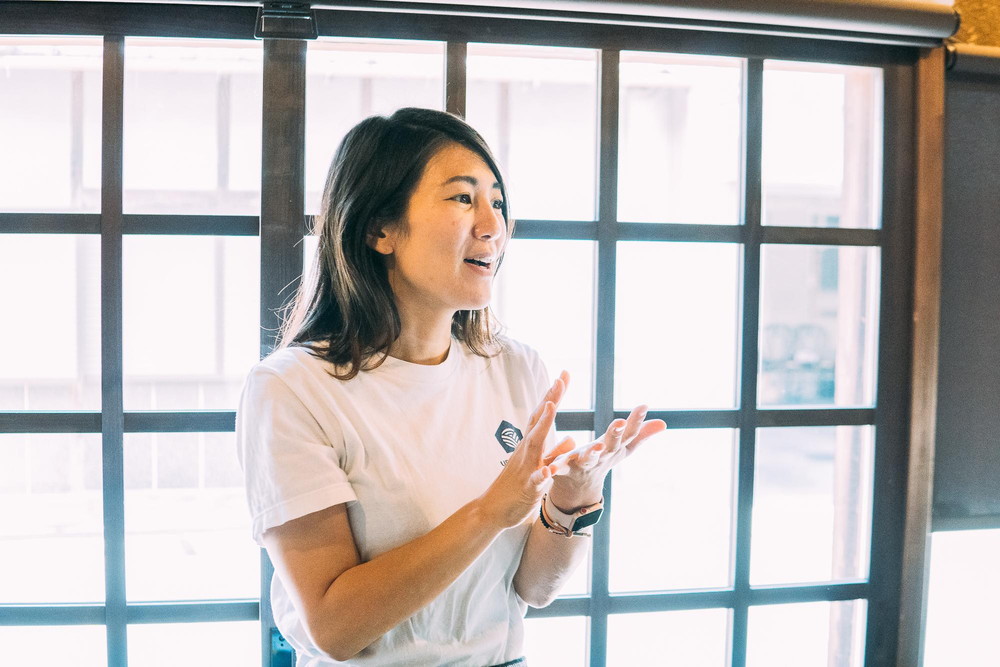
“I didn’t really like to go to trips as a tourist so what I did was to stay at a friends’house who live in the area.” says Kanako. “But if I do that, I wouldn’t be able to go visit a lot of places.”So she decided to make a place where tourists are able to learn, communicate and experience the local culture even if they do not have friends in that area. For her previous job, she had a chance to visit Mitoyo-city, and was fascinated by how deep Udon has its roots in the area.
So Kanako decided to make a place in Kagawa where people can visit and communicate with the local people which became the UDON HOUSE.
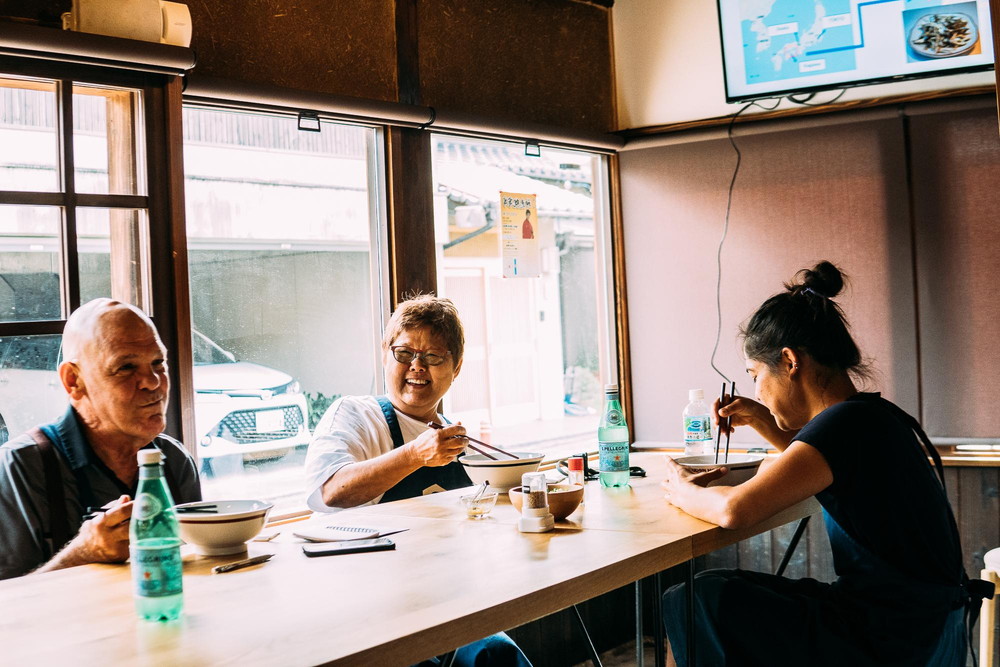
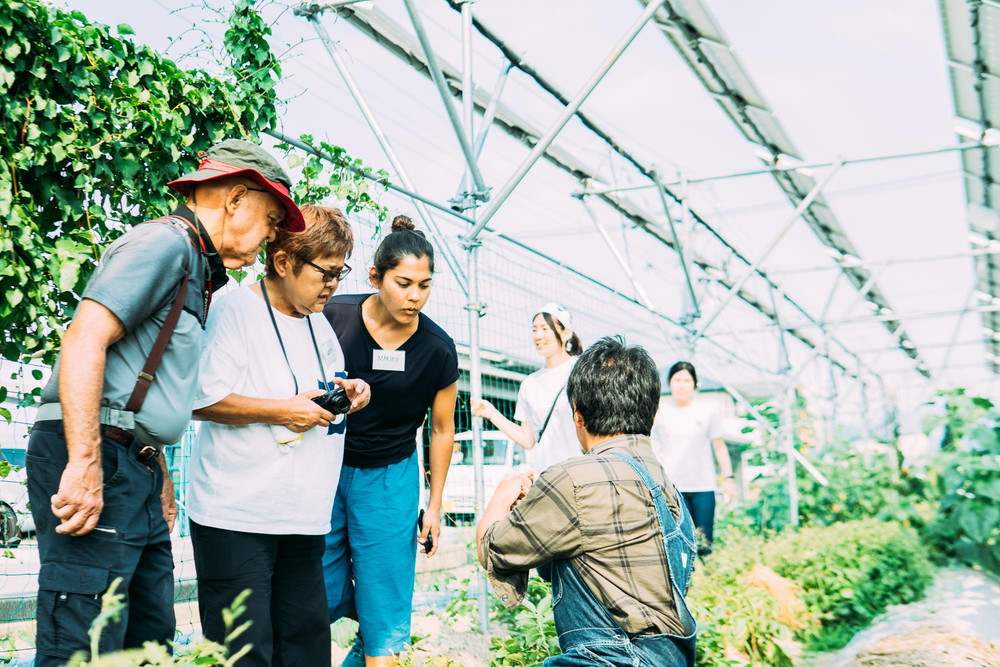
“So I always try and cherish the opportunity for the people who visits “UDON HOUSE” to communicate with the local people. I am not teaching people so that they become experts in making Udon, I am doing this so that people are able to take back and experience more than the photos of Udon and learn the local culture as well through Udon.”
Lecture of UDON HOUSE is based on curriculums offered at“All Japan Noodle Technical Center” in addition with Kanako’s experience and perspectives. “All Japan Noodle Technical Center” is a noodle machine company that offers various noodle courses for over 43 years, to over 40,000 people from more than 38 countries.
Kanako was born in Hokkaido, the very north prefecture of Japan, and moved to Tokyo when she was in high school so she did not really have anywhere she could call her hometown but she decided to move to Kagawa and now she can truly call Kagawa her hometown.

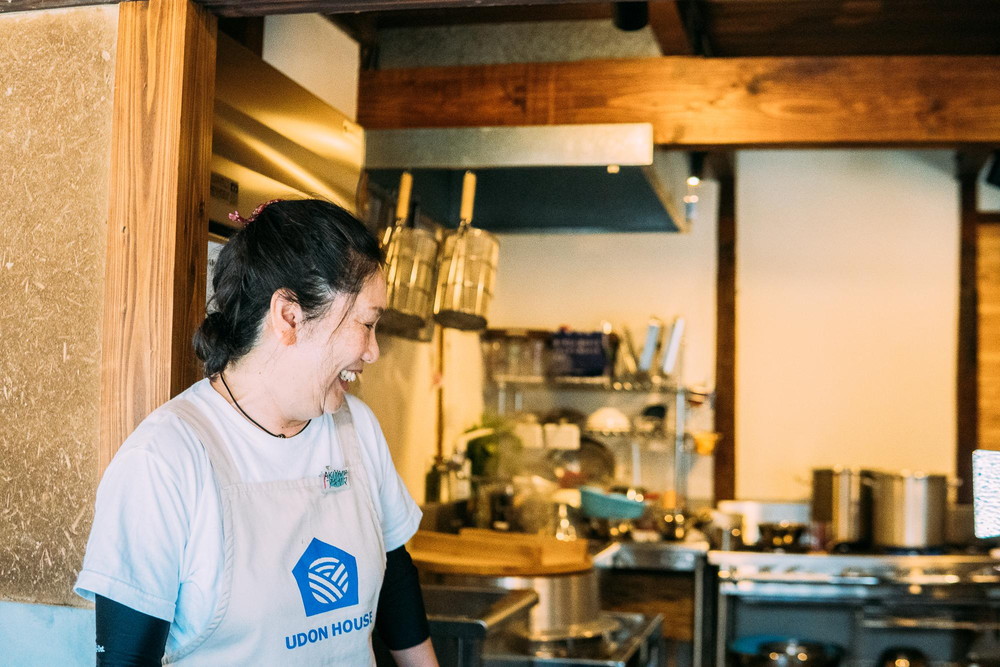

UDON HOUSE will offer much more than taking photos of the local area but also a time to rethink about connections with people and create your second home through the power of udon.
Shop Information
<Name>
UDON HOUSE
<Address>
〒769-1507
1651-3 Okamoto, Toyonaka-Machi, Miyoto-shi, Kagawa, Japan
<Phone No.>
0875-89-1362
<Email Address>
info@udonhouse.jp
<Website>
https://udonhouse.jp/
- Writer
- HIroaki Hata
- Photographer
- HIroaki Hata
ソトレシピLOCAL GUIDE
-
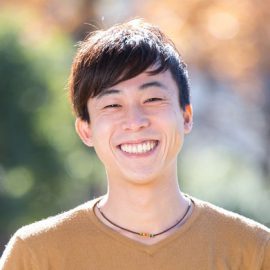 For more
For moreMISO SOUP Inc. CEO / Setouchi Udon Company K.K. CUO / MITOYOTSURU, LLC. Representative employee
Tomohiro Kitagawa(TOMOHIRO KITAGAWA)
information
Related articles
-

[NEWS] Collaboration of Japanese Kawaii Culture and Japanese Cuisine
Harajuku and Omotesando area in Tokyo are the sacred
- from:
- Minami Aoyama, Minato-ku, Tokyo
- genre:
- Experience / Eat
POSTED on 2019.11.06
-
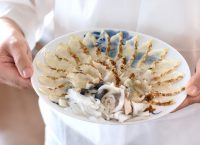
Only one in the world! The fugu* cooking professional initiates Challenge the tora fugu* cooking experience at Shimonoseki
* puffer fish *2 tiger puffer fish Shimonoseki pri
- from:
- Karato-cho, Shimonoseki-shi, Yamaguchi
- genre:
- Experience / Learn / Eat
POSTED on 2019.09.18



